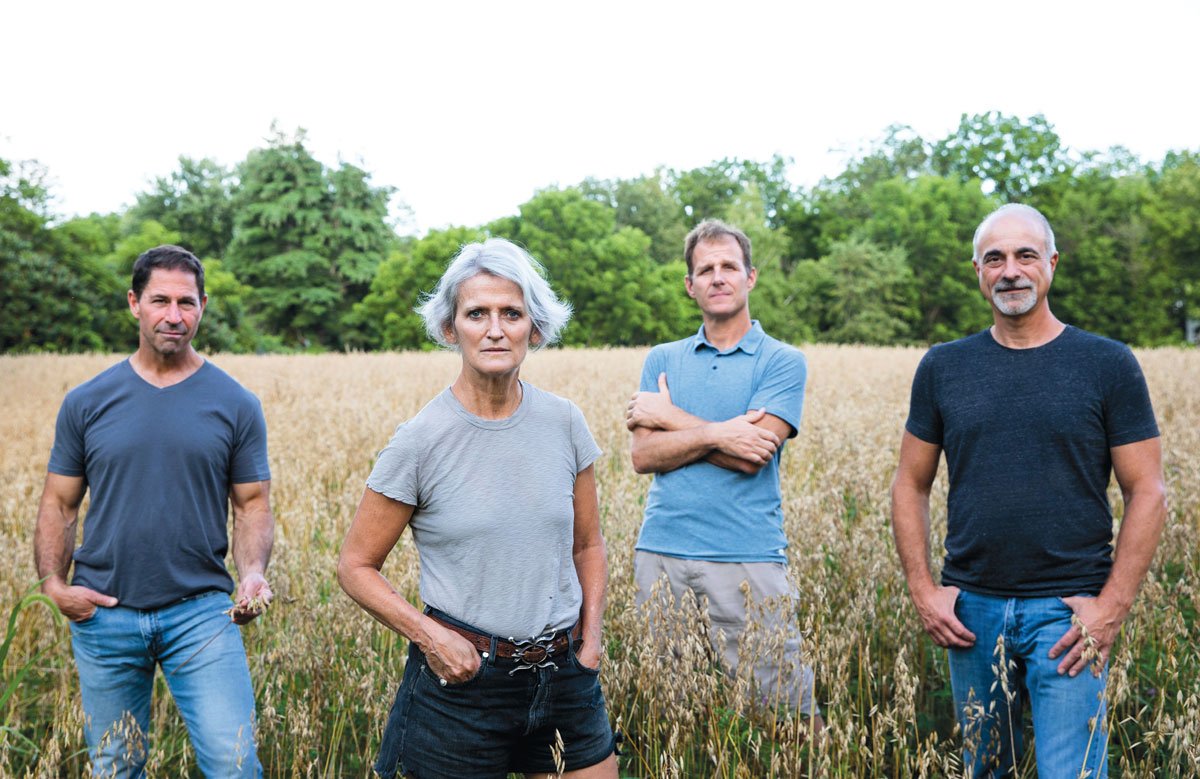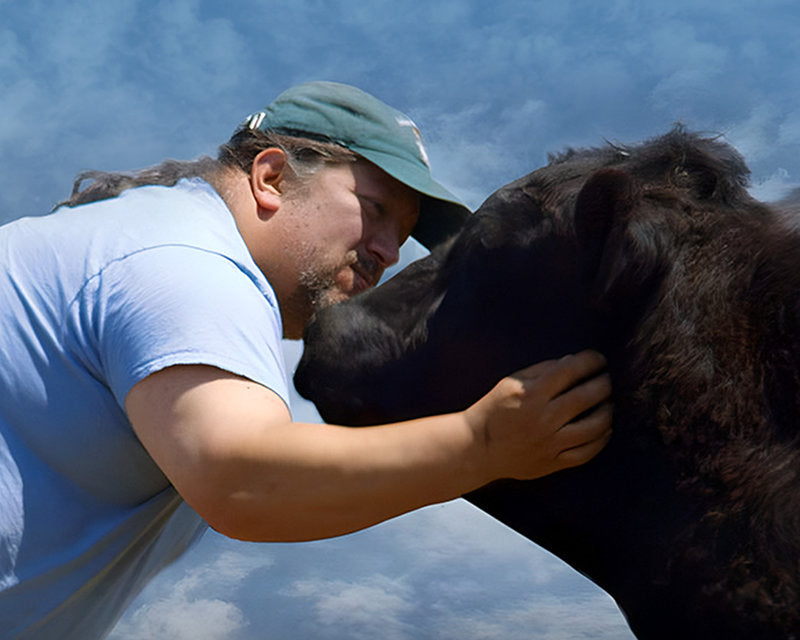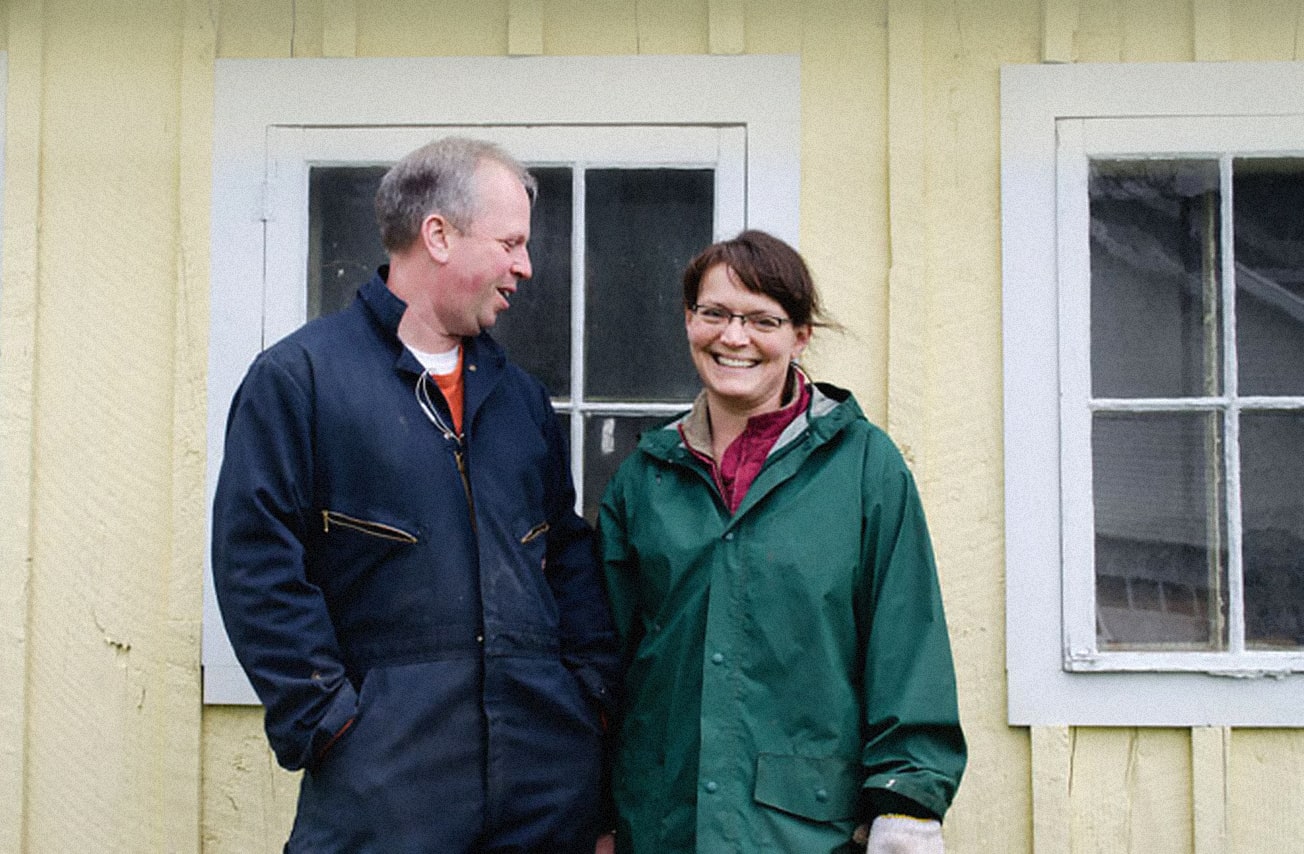One Grain at a Time
In conversation with Lenny Bussanich
On the surface, the three men behind River Valley Community Grains are millers, but the business that Lenny Bussanich, Mike Hozer, and Larry Mahmarian have built is about much more than making flour. “The mission from the start has been to encourage farmers in Northern New Jersey to transition away from commodity crops, such as corn and soybeans, and start growing small, value-added grains for local markets,” says Lenny. “We also want them to farm in a regenerative way, so no chemical inputs, no glyphosate, no pesticides, to ensure soil health.”
River Valley Community Grains convinces farmers to change their crops and practices not only by explaining the benefits to the local food system, but also by coaching them through the process, paying them a better price for their grain, processing the grain, and marketing the final product. “We've had to wear several hats,” Lenny says. “We've been fortunate to work with an organic grains agronomist who has guided the farmers on how to grow without chemical inputs. We've helped the farmers clean the grain once it's harvested and get the grain tested to make sure it's viable for human consumption, too.”
Now that a handful of farmers are on board, River Valley Community Grains is hoping to focus more on the milling itself. They recently moved into a new facility they call Marksboro Mills, where they roll oats and mill wheat into flour using an old-fashioned stone mill from New American Stone Mills. The space boasts plenty of storage and a retail shop, too. Here, Lenny shares more about the company and how it's improving New Jersey’s food system.

Mast Journal: How do you encourage farmers to grow grains like hard red wheat and einkorn?
Lenny Bussanich: We know from experience that there is a big demand for these products, so we're trying to show the farmers that the demand is there and it's really the supply that's the issue. We've also been able to pay farmers at a higher price than what they make in the commodity markets, which from my understanding is at a set price that doesn't always factor in their costs. So we've been able to successfully have several farmers switch over some of their fields because of the price quote that we provided. It's that economic incentive, as well.
And it’s also that they don't have to worry about the marketing piece—that's where the value of River Valley Community Grains comes in. We'll take on that marketing piece. They can work with us on their growing practices, to try to transition more of their fields to growing grains. We pay them for that and then we essentially take care of the rest.
MJ: That’s an incredible service you offer.
LB: It was our willingness to do these several things that really provided the value proposition for them. And then it was their willingness to say, ‘Okay, we’ll grow five or 10 acres.’ We're not looking for 500 acres. That sort of grain growing is associated with the Plains states. We can work at that smaller scale. We are now at a scale, though, if a farmer wanted to plant anywhere from 50 to 100 acres, we can most likely take that on because of how we've been evolving. And if we can get a couple of farmers closer to the mill, that's even more ideal because grain is heavy. You really have to factor in logistics and transportation. It just allows for a much smoother, more efficient process.
MJ: Totally. What were you doing before you became a miller? And what made you want to start River Valley Community Grains?
LB: I was working in the outdoor industry for a long time, most recently as a buyer for a mom-and-pop outdoor gear store. I've always had a passion for hiking and biking, open space and environmental protection. I have also been just as passionate about local, healthy, organically grown food. So when my partner, Mike Hozer, came up with this idea of jump-starting a local food economy, he asked me and our other partner Larry Mahmarian if we were interested in participating and it resonated with me. I told him I would love to become more involved.
There were already grassroots, local food initiatives taking place in New Jersey with vegetables and fruits and grass-fed beef, but grain was missing from the locavore food movement. And New Jersey, as well as the rest of the Northeast, once had a rich history of grain growing and flour milling. Marksboro Mills is actually named in honor of the original 1762 mill that existed in the area, which is still standing down the road. But a lot of that industry disappeared years ago. However, there has been this grain renaissance occurring in the Northeast in the last 15 plus years, especially in New York state, so we thought maybe we could bring New Jersey back into the fold. That was essentially what drove us and inspired us to continue on with this.
MJ: That’s such a great origin story. And you three taught yourselves how to mill grain?
LB: We did. Five years ago, in 2019, we purchased our first mill. It was a tabletop mill that was milling 35 pounds an hour. At the same time, we found space at a commercial kitchen in Long Valley, New Jersey so that we could process one night a week. The three of us were still working our full-time day jobs then, but the business eventually grew to where we had to get a couple of more of these tabletop mills. There were bigger models that allowed us to mill 65 pounds an hour. We were at this commercial kitchen space up until April of last year.
In April 2023, we finally left the commercial kitchen and we moved into our new space called Marksboro Mills in Marksboro, New Jersey. It was really the purchase of this much newer mill, made by New American Stone Mills, that has been a game changer for us. We have a real, old-fashioned, 48-inch stone mill. It's the biggest mill they make. It comes with sifting capabilities. It just gives us more flexibility and the ability to produce a much higher quality product.
Before, we just weren't able to do certain things for baker's requests. But now with this new mill, it's allowing us to further strengthen those conversations. And that was another element of our mission statement, to rekindle these conversations between farmers, millers, and bakers. And now we're really seeing these relationships getting to a higher level, simply because now we have this newer mill.
MJ: That’s so exciting. What kinds of grains are you working with?
LB: For our bread flours and our all purpose flours, we work with a lot of hard red wheats. There's hard red winter wheat and there's hard red spring wheat. And there are different varieties of each. Redeemer and Warthog are two varieties of winter wheat. They have an earthy, nutty flavor. One popular variety of spring wheat we work with is called Glenn. All of them have different protein contents, which affects the baking process, so being able to offer a variety of wheats allows us to meet different bakers’ needs and requests.
MJ: That makes sense.
LB: And then we also have ancient grains, like spelt and einkorn. Einkorn was one of the first grains cultivated more than 10,000 years ago with the advent of agriculture. For good or bad, it was associated with the rise of city states and civilization. Einkorn has been consistent through the ages. And when we first started attending the farmers markets, quite a few of our customers weren't aware of it. But now, after five years of attending markets, people are very familiar with the einkorn. They absolutely love the flavor. It’s very versatile. You can make bread, pasta, crackers, pizza, and pancakes.
Another big driver has been the oats. We not only have a stone mill, but we also have an oat roller, so we're able to provide oats for oatmeal. And there's a lot of familiarity with oats, so obviously that resonated with the public rather quickly when we first started attending markets.
MJ: Do you have a favorite grain to bake with or eat?
LB: I’m not baking very much, but I do use the grain berries in place of rice when I’m cooking. I love making steamed vegetables and throwing in a winter wheat berry or farro, also known as emmer. They do take a little longer to cook, but the flavor is so much more exceptional. So I'm cooking with the grains in the berry form, but I'm not necessarily baking bread. A lot of the information I'm learning about baking is from having conversations with our baker customers.
MJ: Got it. That sounds delicious. Are there any bakeries you love that use River Valley Community Grains flour?
LB: Frenchette Bakery in Tribeca and at the Whitney Museum uses our grains in their einkorn country loaf. And Otway in Brooklyn.
MJ: Great spots!
LB: They’re excellent. Some of our bakeries here in New Jersey are Jed's Bread in Bloomfield and Le French Dad Boulangerie in Montclair. And here at the mill, we've set up our retail area where we sell bread that was made using our flour by Jed from Jed’s Bread and Alvin from Le French Dad. The public has been just giving us amazing feedback on the quality of the bread.
MJ: That’s incredible.
LB: One of our main goals was to provide our community with those nutrient-dense breads. The fact that we can do it here has just been fantastic. We've also been having monthly Friday pop-ups here to promote local artisans. Last Friday, we had a pizza pop-up. It's a mobile van. The company's called A Slice of New Jersey. It happened to be a beautiful day. The weather was a little warmer and I had never seen the place so busy. He sold out of pizzas in about two and a half hours.
We're looking at this space, the home of River Valley Community Grains, as a grain food hub. We're really highlighting our collaboration with the bakers and pizza makers using our flour and the merchants using our raw ingredients in their products, such as granolas and pancake mixes. We're trying to showcase this as a place where we can promote and highlight local artisans that are connected to the evolution of food in the area.
More from The Journal

First, John moved back to his childhood home in Pound Ridge, New York, where he quickly filled his backyard with about 400 chickens, ducks, turkeys, and Guinea hens. Then, he began searching for fa...
Read more
Suzie and Peter Jones didn’t set out to become cheesemakers. In 2004, the couple moved their family to Upstate New York and began raising goats for meat. Though they were able to sell some of it, c...
Read more